Food Packaging Design: The Hidden Persuader on Your Shelves
You could be wandering down the cereal aisle, and WHAM! Those vivid colours and bizarre cartoon characters would just leap off the boxes and grab your attention. People, that’s the magic of good packaging design. It’s like having a little salesperson sitting on your shoulder saying, “Buy me! Buy me!”
I know what you’re thinking — you can’t judge a book by its cover (or a cereal by its box). But let’s face it… we all fall for attractive packaging at some point. It plays this sneaky mind game with our senses and emotions before we know it.
So, come along with me on this delicious journey through food packaging design. I will spill all the secrets, tactics, and hidden art that can make or break a product’s success on those ruthless grocery store shelves.
- Effective packaging design captures consumer attention within 3-5 seconds, influencing purchasing decisions significantly.
- Good design can boost sales by 8-10%, turning ordinary products into desirable impulse buys.
- Colour and typography play crucial roles in evoking emotions and establishing brand identity on shelves.
- Sustainability and user experience are increasingly important, with eco-friendly designs and easy functionality prioritised.
- Future innovations may include interactive and edible packaging, redefining consumer engagement and reducing waste.
Why Does Packaging Design Matter So Much?
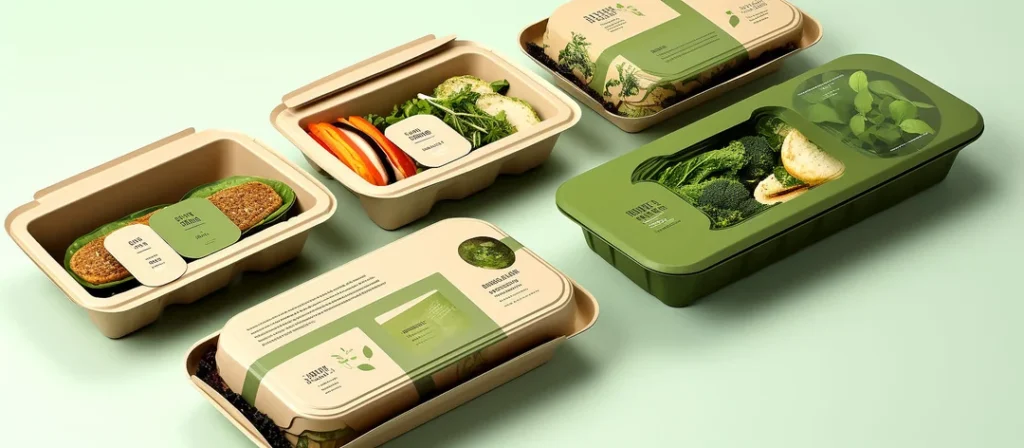
In today's busy world, you only have 3-5 seconds to catch a consumer's attention. That’s just enough time to make an impression among countless other products.
With so many options available, the packaging often makes or breaks a sale during the “first moment of truth.” It’s what turns a mediocre product into an irresistible impulse buy.
Consider these statistics:
- 72% of American consumers say that packaging design can influence their purchasing decision
- Good packaging can increase sales by 8-10%
- Companies such as Coca-Cola and Pepsi put millions into refining their signature looks
Packaging doesn’t just sell the product – it sells an experience, a lifestyle, a personality. It’s also usually the first physical interaction someone has with a brand. No pressure!
Rising Above The Noise
Now imagine walking down an unbranded grocery aisle with plain white shelves. Confusing and boring, right? You wouldn’t know what to grab.
Packages need their voice and identity to stand out on shelves next to dozens of other products. It’s like that one friend who always dresses super eccentric.
Brands like Starbucks invest heavily in elevated packaging because it reflects their premium positioning. On the other hand, value brands go for clean and minimal designs that scream ‘affordable’ from miles away.
However, the design has to be perfectly aligned with the brand personality and target consumer – a fun cereal mascot might appeal to kids. Still, it wouldn’t exactly scream ‘organic ethically sourced granola,’ now would it?
Colour Me Intrigued
Think of colour as Hollywood celeb status within packaging circles – it grabs attention and elicits powerful subconscious reactions. So, just picture biting into a ripe ruby-red apple versus its dull brown counterpart…
Bright bolds such as reds and yellows are like neon signs shouting ‘LOOK AT ME!’ They’re often used on snack packs meant to spark impulsive cravings.
Soft blues and greens, on the other hand, signal freshness, healthiness and all things natural. At the same time, deep purples scream luxury and indulgence (hey, there's premium chocolate).
But be careful – too many conflicting shades can overwhelm or confuse shoppers, so it’s best to have an experienced designer find that delicate balance.
Let's Talk Typography
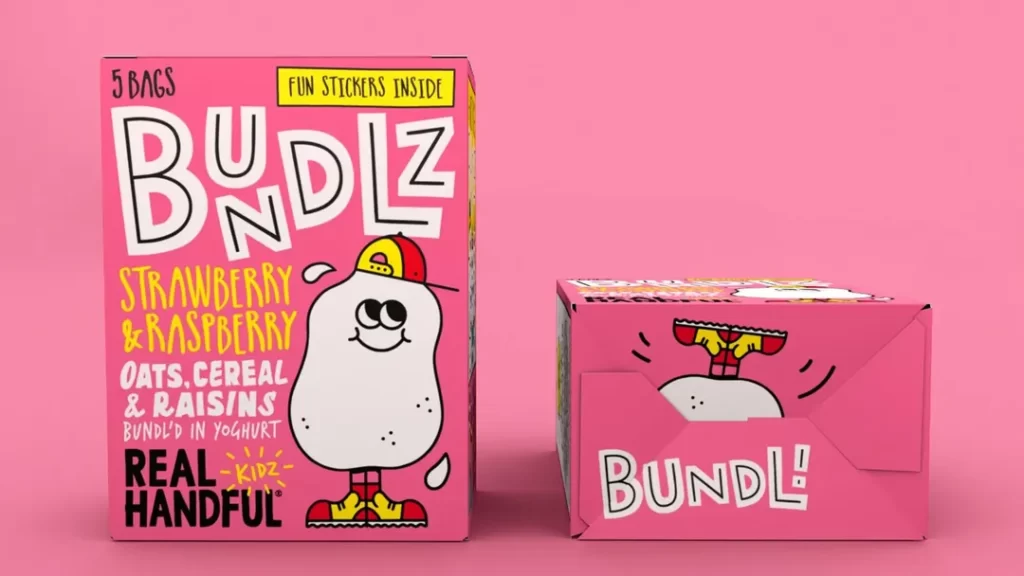
You'd never guess that the humble fonts gracing a package could wield such enormous influence, would you? But those letterforms are like a brand's voice whispering (or shouting) at you from the shelves.
Imagine if Coca-Cola suddenly changed their iconic script to Times New Roman. It wouldn't be the same. That flowy, retro lettering is embedded in our cultural psyche.
Script and handwritten fonts exude a warm, friendly, artisanal vibe that connects with consumers personally. While bold, geometric sans-serifs convey strength, simplicity, and modernity (think McDonald's and Ikea).
Then, you've got distinctive novelty fonts that are fun and memorable. Who can resist Dr Seuss's book covers' quirky lettering or Ben & Jerry's ice cream?
But be warned – get too wacky or unreadable with your font choices, and consumers will scratch their heads instead of drooling.
The Power of Product Photography
They say a picture is worth a thousand words, but it's worth a thousand flavours on food packaging! Stunning product imagery can make even the most mundane snack look like an avant-garde culinary masterpiece.
Look at all the glorious close-ups adorning packages these days: Dewy water droplets clinging to fresh greens, glistening glazes dripping down layer cakes, syrups oozing over mountains of ice cream sundaes.
We're not just buying food here, people. We're buying into edible fantasies of indulgence and pleasure that elegant photography helps sell.
But you can't just slap any old stock image on there. The most successful brands invest in custom food styling and photography to create tasty, distinctive visuals that reinforce their unique identity.
It's an essential tool in a designer's arsenal to make mouths water and online carts fill up.
The Method Behind the Magic
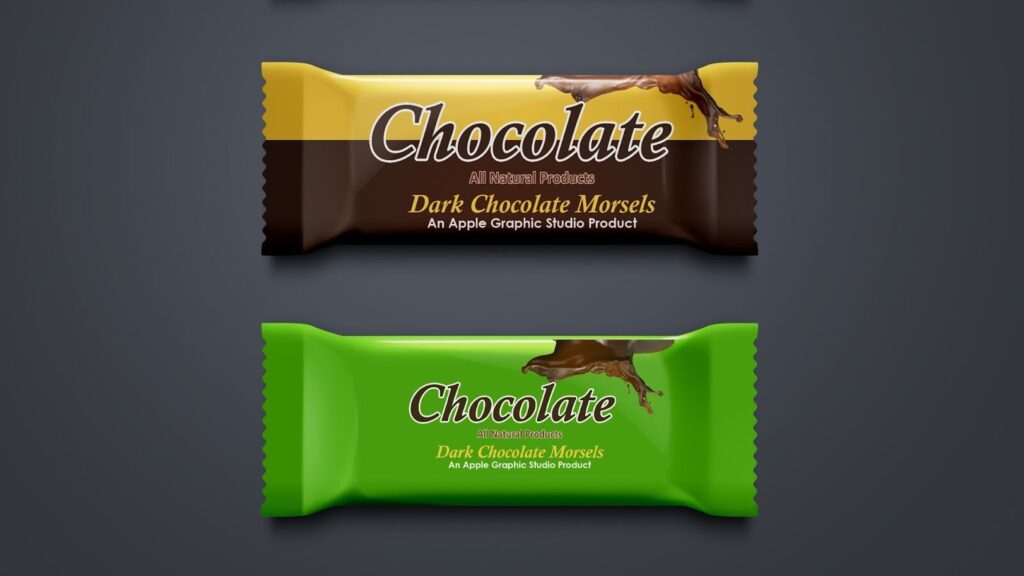
You'd be forgiven for thinking food packaging design is about making things look pretty. But oh no, my friends – there's much research, psychology, and strategy behind those shiny surfaces.
Extensive Consumer Insights
Before that slick package design is even born, a serious investigation is underway into the target audience's psyche. Likes, dislikes, demographics, shopping behaviours – no stone is left unturned.
Companies spend massive amounts of money on consumer studies, ethnography, data mining, you name it. They all need to understand their customers' attitudes and decision drivers deeply.
With those valuable insights, designers can start crafting packaging that speaks to the audience's beliefs, aspirations, and purchasing triggers.
The Structure Matters Too
While we've been focusing on the visuals, brilliant designers know that the physical packaging structure is just as critical. The shape, size, weight, and opening experience all shape consumer perceptions.
Chunky, solid bottles signal durability and freshness for beverages. While slim, curvy containers create a sensual, free-flowing impression for products like yoghurt and beauty.
Then you've got innovative packages designed for pure convenience like the protruding DoubleStuffed ring that helped Reese's peanut butter cups fly off shelves or Pringles' addictive “ratchet lid.
Even the humblest facets like label materials, coatings, and embossing effects are carefully calculated to influence product perceptions and shopping experiences.
The Ever-Important Shelf Impact
While packaging needs to woo consumers up close, it must hustle hard for attention from afar. This “shelf impact” could make or break whether someone notices a product exists.
Designers meticulously study sightlines, lighting conditions, typical shelf sets and orientations. All to maximise a package's stopping power and brand blocking amidst the visual clutter of modern grocery aisles.
A rhythmic composition of colours, shapes, and contrasts creates eye-catching disruptions. In comparison, clever structural designs like built-in footer trays help products look “billboarded” and prominent from across the room.
It's like dressing a package as the prom queen or king of those crowded shelves!
Intelligent Design for the Greater Good
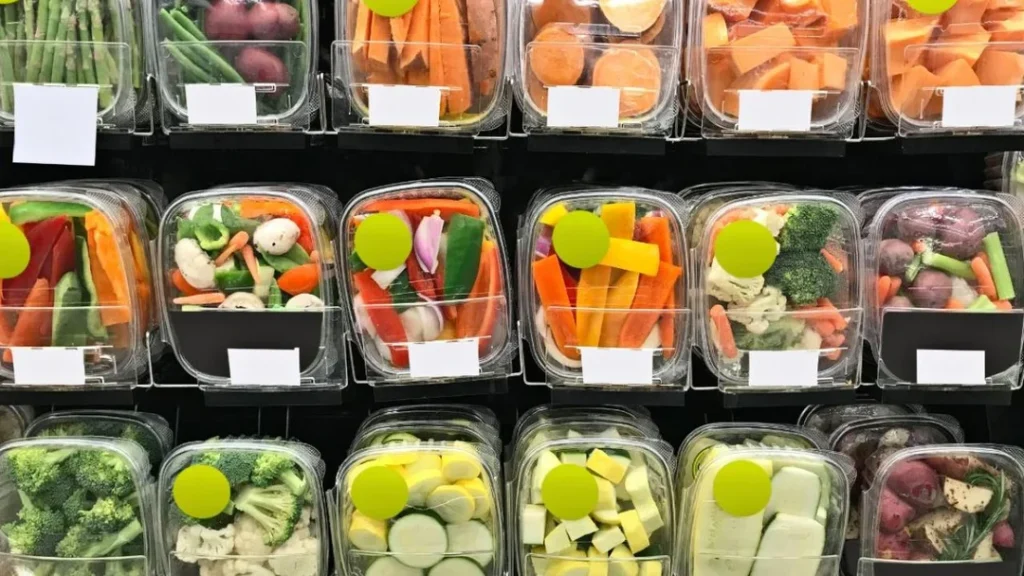
While aesthetic appeal is vital, the best designs prioritise sustainability, functionality, and accessible information for consumers. There's an entire ethical side to this field that often goes overlooked.
Eco-Friendly Considerations
With consumers (rightly) demanding more environmentally-conscious products and packaging, intelligent designers are getting extra creative.
There's a massive push toward minimising plastic use, favouring renewable materials like moulded fibre pulps and compostable bioplastics. You're also seeing a rise in lightweight “beer can” styles of packaging that are easier to ship and recycle.
Shapes, finishes, and ink choices are optimised to reduce materials and energy consumption. While transparent windows, Smart Codes, and other labelling innovations provide ample product visibility without excessive bulk.
It's all about that magical sweet spot of minimalism and responsibility – creating highly effective packaging yet treads lightly on the planet.
Clear, Honest Information
Beyond those pretty visuals lies a critical function – educating consumers with precise, transparent product details.
In our modern “foodie” culture of nutritional awareness and special diets (vegans, food allergies, etc.), thorough labelling has become a must. Shoppers demand honest ingredient lists, nutrition facts, sourcing details, and certifications.
The most innovative brands integrate this informative content as a seamless part of the packaging design rather than an afterthought. With clever formatting, colour coding, and even expressive typography, complex data can be conveyed in a clean, accessible way.
This transparent educational approach builds trust and a loyal customer base for companies embracing it fully.
Enhancing the User Experience
We've all wrestled with those frustrating packaging nightmares at some point – containers that are impossible to open, leaky pour spouts, flimsy little packets that rip, etc. Bad design strikes again!
The most thoughtful designers go beyond aesthetics to optimise a product's total user experience from start to finish. Easy-open features, intuitive dispensing, secure reliability, grippy textures, mess-free emptying – it's all put under the microscope.
Even humble factors like legible dosage lines, microwaveability, and foolproof assembly instructions get meticulous attention. They are creating an utterly seamless, stress-free journey from store to consumption.
It's packaging that flatters your intelligence instead of making you feel like a bumbling idiot. I'll take modern design over those clumsily engineered '90s monstrosities any day!
Futuristic Frontiers in Packaging
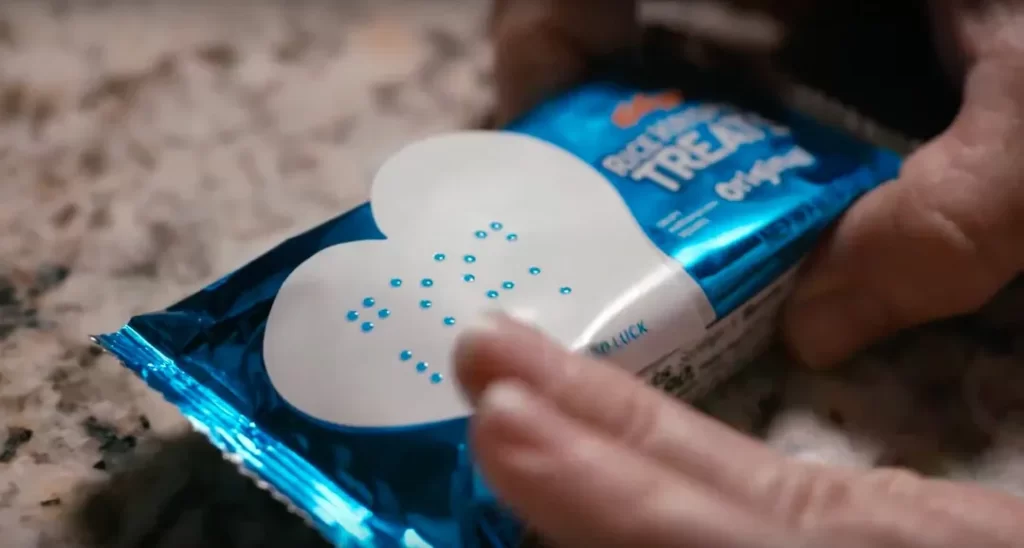
While we've explored the current state of food packaging mastery, the most remarkable innovations are yet to come. Designers worldwide are redefining what a “package” even means.
Interactive, Augmented Packaging
Sure, captivating visuals are excellent. But what if your packaging could come alive with bells, whistles, and digital extensions? A compelling new era of experiential, augmented packaging is upon us.
Using QR codes, NFC chips, and other embedded multimedia links, packages can instantly transform into immersive branded experiences. Games, recipes, educational videos, social sharing, and even AI assistants are now possible.
A smartphone app lets Kids watch their beloved cereal mascot spring to life. At the same time, curious adults can get the full farm-to-table story behind their artisanal ingredients.
Savvy brands use this technology to cultivate deeper engagement, loyalty, and meaningful connections. It's the ultimate modern-day value-add.
Intelligent Packaging
Even our food packaging will get brainy upgrades in our future smart homes. Think built-in expiration trackers, tamper-evident seals, temperature and moisture sensors.
Intelligent labels could automatically provide streamlined reordering capabilities through smart devices. Or activate convenient meal-planning services based on package contents. Forgetful food waste may finally become a relic!
On the commercial side, innovators are pioneering traceable nano-sensor codes to monitor shipments. Potentially signalling the end of those heartbreaking “sorry, we ruined your birthday cake” delivery fails.
As the “Internet of Things” evolves, our packages could seamlessly integrate into a hyper-connected world of preemptive services and dazzlingly automated convenience.
Edible Packaging?!
This one's a deliciously wild concept but stick with me here. As our sustainability priorities intensify, researchers are even exploring edible forms of packaging to eliminate wasteful plastic and paperboard.
A new category of ingenious comestible containers is emerging from biodegradable films made of milk proteins or chitosan (polysaccharides from shellfish) to rice paper pouches and bread bowls.
This would mean no packaging trash left behind, and fresh foods could be preserved and conveniently eaten straight out of their hyper-hygienic casings.
Getting used to gnawing on our potato chip bags will take some time. But considering the environmental payoff, I'm ready to embrace my inner rodent and start nibbling away!
Conclusion: The Final Delicious Frontier
So there you have it, folks – a delectable deep dive into the beautiful world of food packaging artistry. Who knew those seemingly basic containers were Trojan horses of strategic thinking and hidden persuasion?
From eye-catching designs reeling us into sustainable, user-friendly experiences satisfying our eco-conscious cravings, this humble discipline is a powerful force shaping our supermarket psyches.
And with virtual realities, intelligent upgrades, and even edible containers on the horizon, the most innovative packaging has yet to hit our shelves and plates. The future of food and how we conveniently transport it has never looked brighter (or more delicious)!
As you mosey back through those grocery aisles, I hope you'll notice those unsung packaging heroes in a new light. Behind every mouthwatering visual, a fascinating symphony of research, design prowess, and consumer savvy is playing out.
So keep your eyes peeled and your tummy grumbling, my friends. Scrumptious delights and irresistible brand connections lurk around every corner thanks to heroic packaging design.
FAQs on Food Packaging Design:
What makes packaging design for food products essential?
Packaging is essential in catching a consumer’s eye, creating a brand image, providing product information and improving user experience. Commonly, the uniqueness of the packaging determines whether one will buy it within seconds.
According to you, what are some principles behind good packaging design?
Successful designs use colour strategically; they also employ typography and strong imagery of the product itself; they should be intuitive enough structurally and have transparent labelling to connect with where it positions itself among similar products besides appealing to its target audience functionally and aesthetically.
How does customer research come into play when designing packages?
Designers carry out extensive studies on shopper demographics, such as psychographics. Still, they are not limited to their behaviours while shopping, among others, which helps them gain the insight needed to come up with a package that directly resonates with what people believe who identify themselves through what they want/need desire look forward do decide upon buy etc.
Why is shelf impact crucial?
Shelves are busy places; hence, one must create a visual contrast for their goods to be noticed by customers who may be far away from these items. Therefore, packaging should be designed using high-contrast colours, shapes, logos, etc., attracting many eyes, even those passing near it.
What do you mean by intelligent/innovative packaging?
Innovative packaging refers to an emerging field where digital technologies such as sensors, QR codes, and embedded chips, among others, are integrated into packages, thereby making it possible for features like expiry date tracking detection, whether tampered with automated reordering system immersive branded experiences streamlined inventory monitoring become usable.
In what ways has augmented reality been applied in packaging?
Some companies have started linking packages with multimedia, such as three-dimensional product displays through QR codes, while others create games, recipes, educational videos, social sharing options, etc.
What advantages does an edible package present?
Edible casings made from milk proteins or chitosan, for example, can help reduce packaging waste and act as a protective hygienic coating for fresh foods, thus making them easily consumed with their containers whenever convenient.
Why is clear information labelling so important?
With modern-day diets coupled with increased awareness among consumers on various issues related to their eating, labelling has become a susceptible yet essential part of any food product. Thus, comprehensive but easy-to-understand labels showing ingredients used, nutritional values sourced, and certifications earned should be provided if transparency and trust between companies and customers are to be built.
How does the design affect the overall user experience?
Well-thought-out designs look good and are easy to use. They ensure that opening, closing, dispensing, measuring, etc. instructions are intuitive while foolproof, guaranteeing stress-free journeys for all users at every level.

